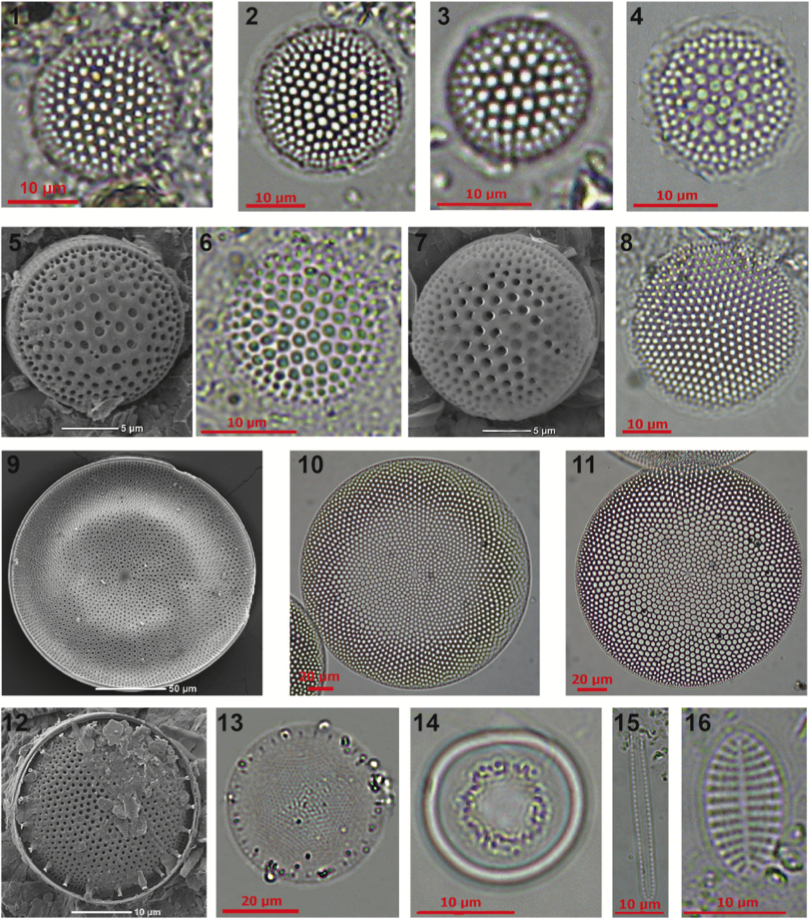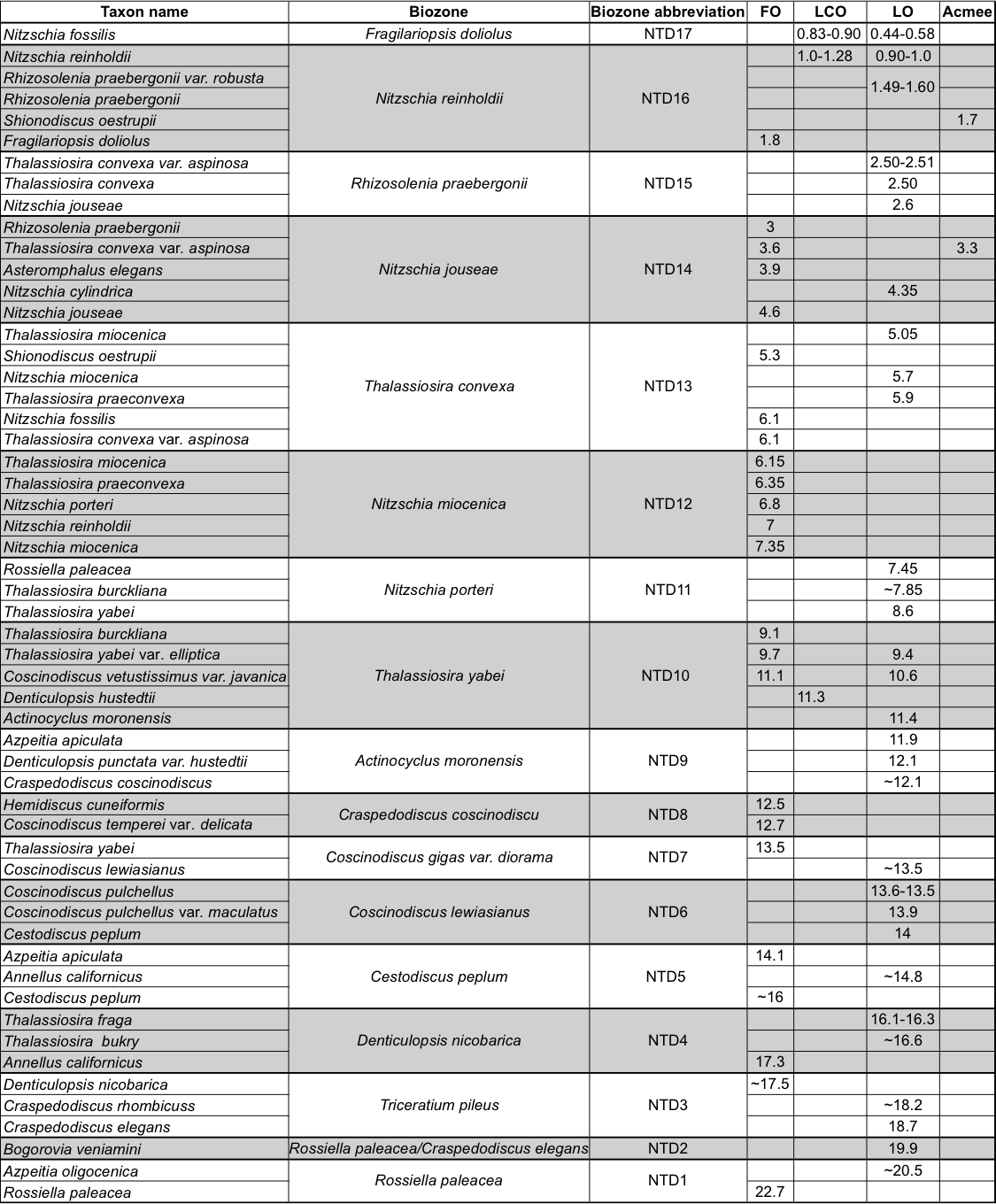Diatoms BIOSTRATIGRAPHY
Quantitatives (counting up to 200 specimens per sample) or semi-quantitatives analyses.
From Mesozoic to Present, everywhere in the world.
High-quality biostratigraphic and paleoenvironments interpretations.
Interpretation of recorded species is based on the global and/or regional biostratigraphic charts.
Case study – Sinop Area, Turkey
Diatoms markers
SAMPLE 1 – Sinop Area, Turkey

Centric diatoms:
Aulacoseira granulata, Coscinodiscus asteromphalus (11),Coscinodiscus oculus-iridis, Coscinodiscus perforatus, Coscinodiscus obscurus (10), Coscinodiscus radiatus, Coscinodiscus giga var. diorama (9)Hyalodiscus cf. stelliger (14), Stellarima stellaris (13), Thalassionema nitzschioides (15), *Thalassiosira oestrupii (2-4 and 6), *Thalassiosira cf. oestrupii (5), Thalassiosira eccentrica (8), Thalassiosira sp. (7, 12), Thalassiosira cf. eccentrica , Thalassiosira cf. lineata, *Thalassiosira cf. praeconvexa (1).
Pennate diatoms:
Rhabdonema spp., Grammatophora spp., Cocconeis scutellum (16), Cocconeis spp.
PROPOSED AGE : Messinian (late Maeotian – early Pontian).
The occurrence of stratigraphycally marker planktonic diatoms Thalassiosira cf. praeconvexa and Thalassiosira oestrupii in this sample allows the comparison with oceanic diatom zones. Th. praeconvexa has a relatively short stratigraphic range (6.3-5.8 Ma) (Barron, 1992; Barron and Baldauf, 1995). The level of appearance of Th. oestrupii is recorded at 5.5 Ma in Equatorial Pacific (Barron, 2003), but Boden (1992) considers that several species related to Th. oestrupii may appear earlier than the main species. Considering these data, we may appreciate an late Maeotian – early Pontian age. Moreover, Popov et al. (2016) mention the occurrence of Th. cf. praeconvexa in late Maeotian and occurrence of Th.oestrupii in Pontian sediments from the Zheleznyi Rog section (Taman Peninsula).
Neogene Diatoms simplified Chart
Ecuatorial Pacific
Selected Cenozoic diatoms species
Biostratigraphic records are based on scientific publications (Geobiostratdata – database)

References
Clemens S.C., Kuhnt W., LeVay L.J., and the Expedition 353 Scientists. Proceedings of the International Ocean Discovery Program Volume 353. publications.iodp.org.
Barron J., 1992. Neogene diatoms datum levels in equatorial and North Pacific, in centenary of Japanese Micropaleontology, (K. Ishizaki,. and T. Saito, eds), Tokyo Univ.Press, pp. 413–425.
Barron J., 2003. Planktonic marine diatom record of the past 18 m.y.: Appearance and extinctions in the Pacific and Southern oceans, Diatom Research. 18 (2): 203–224.
Barron J.A., Badlauf J.G., 1995. Cenozoic marine diatombiostratigraphy and application to paleoclimatology and paleoceanography. In Siliceous Microfossils: Paleontological Society: Short Courses in Paleontology (C.D. Blome, et al., eds),vol. 8: 107–118.
Boden P., 1992. Biostratigraphic implication of Neogene diatom abundances in the Norwegian Sea, the north Atlantic, and the western North Pacific, Meddelanden fran Stockholms Univ.. Inst. Geol. Geokemi, 1992, 287: 178–196.
Popov S. V., Rostovtseva Yu. V., F et al., 2016. Paleontology and Stratigraphy of the Middle–Upper Miocene of the Taman Peninsula: Part 1. Description of Key Sections and Benthic Fossil Groups. Paleontological Journal, 2016, 50 (10) : 1039–1206.